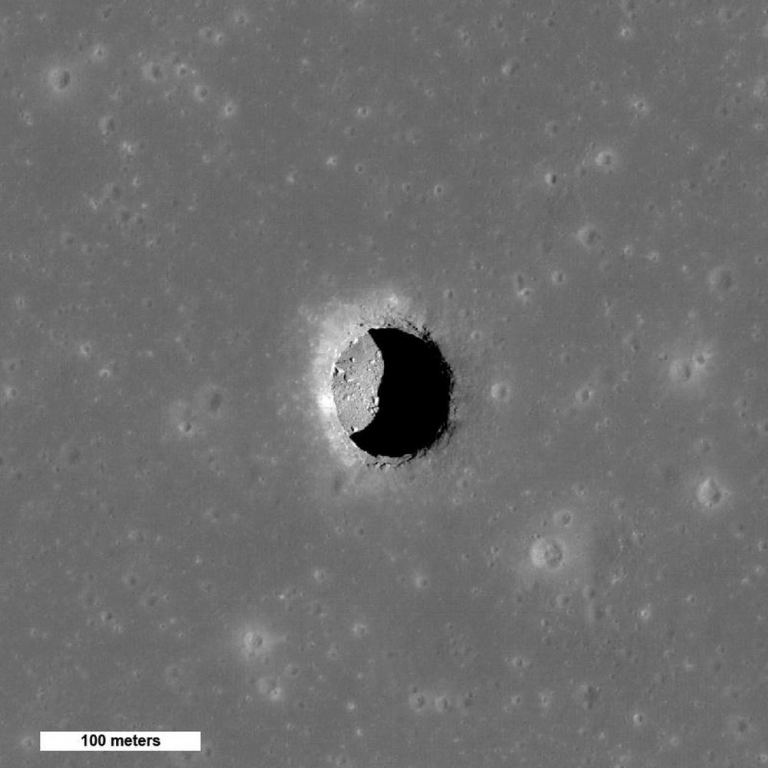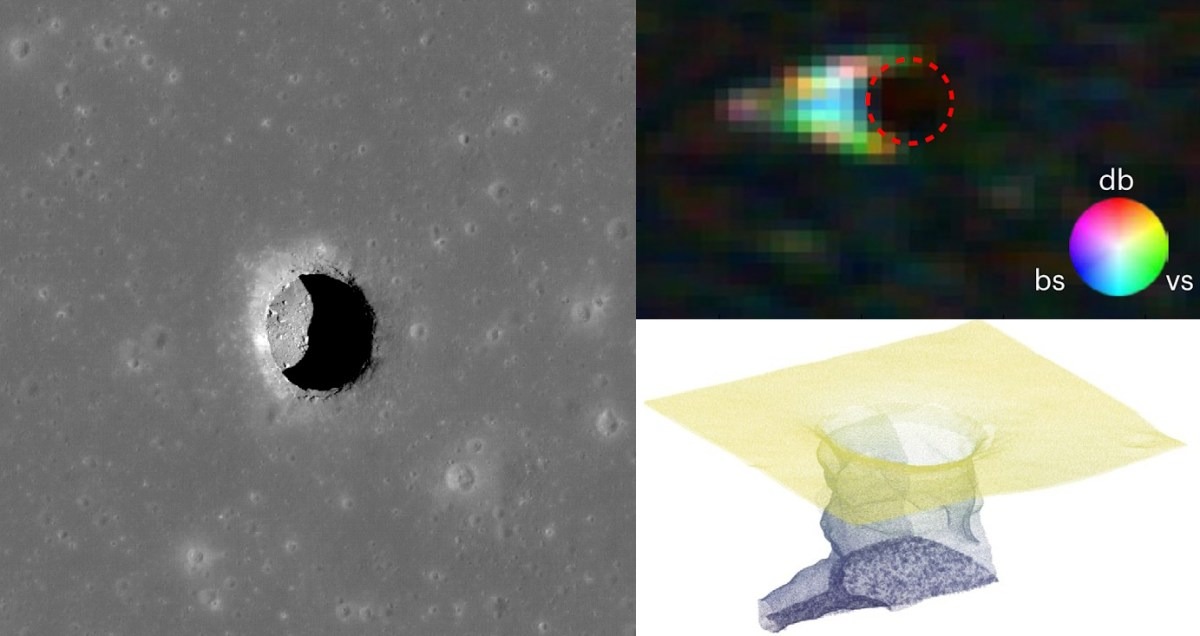Scientists have discovered a possible lava tunnel or cave on the Moon that could help create a long-term lunar colony. Italian astronomers Leonardo Carrera and Lorenzo Bruzzone, working with Capella Space and JHUAPL, analyzed data from the Lunar Reconnaissance Orbiter for 2010. On one radar image of the lunar surface, an underground cave tens of meters long was found. It is located at the bottom of a pit about 100 meters deep, but its exact dimensions are yet to be determined. Previously, such tunnels existed only in theory. But now their existence has been confirmed. The results of the study are published in Nature Astronomy.

The surface of the Moon may seem calm, but the conditions there are very extreme. Large temperature fluctuations, the absence of an ionosphere, which means no protection from radiation, and a constant high risk of meteorite impacts. Therefore, engineers need to make sure that the housing for future colonists on the Moon must be very durable. Lunar caves have long been proposed as an alternative to terrestrial constructions: they are protected from temperature fluctuations, radiation, and meteorites.
For the space industry, this discovery means that designing a dwelling in a lunar tunnel becomes a realistic proposition. The location of the cave is convenient — the Mare Tranquillitatis crater, not far from the Apollo 11 landing site. After the success of the first private lunar landing of Intuitive Machines last year, we can expect active efforts to explore this cave and others like it.

The discovery of a lunar cave could be the next big thing in the space industry. NASA will soon begin reviewing plans for lunar settlements and long-term presence on the Moon. Also, if the Artemis mission is successful, NASA will be able to allocate more funds and build a lunar base. We can expect a wave of research and startups aimed at developing a settlement on the Moon below the surface. Civil engineers will demonstrate ways to reinforce housing, solar energy providers will demonstrate how to drill pipelines or transmit electricity over long distances. Robotic exploration and excavation will get a new impetus, and lunar rover contenders will improve their machines.
Although the discovery of the lunar cave is important for researchers, builders, and sponsors, many uncertainties remain. The cave is at the bottom of a pit, and access to it will require excavation or creating additional infrastructure. Its size and conditions may not be suitable for habitation. But the fact that it exists is a game changer, opening up a new era of research and development for future lunar colonies.
Earlier, we reported on how robots will explore the interior of Mars and the Moon by “breadcrumbs”.
Based on materials from techcrunch.com

